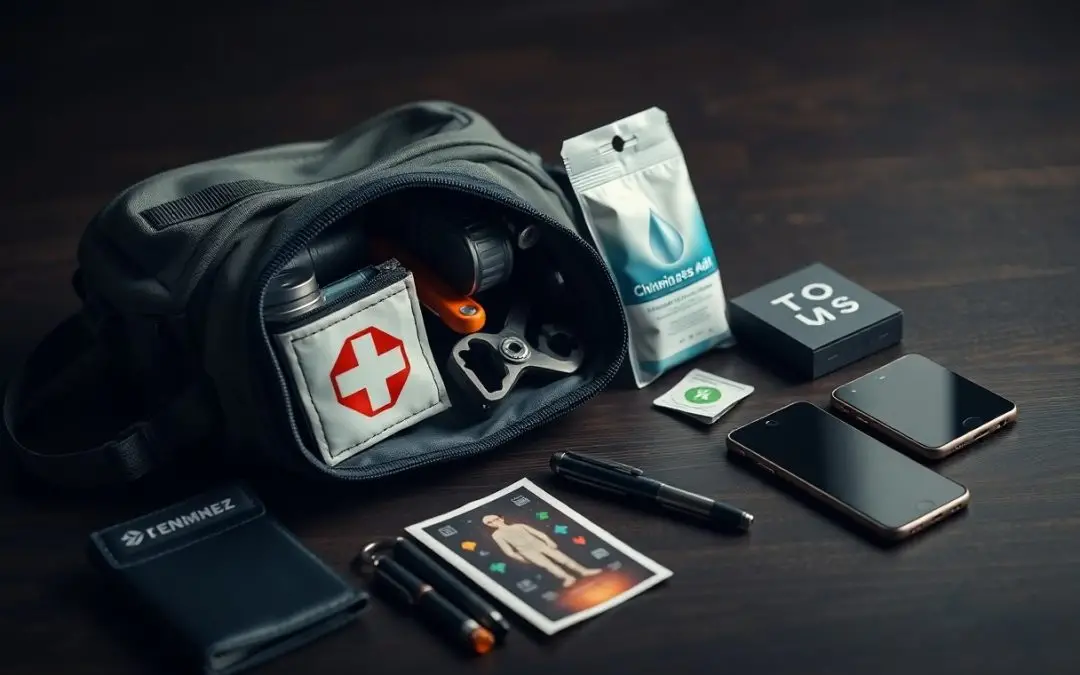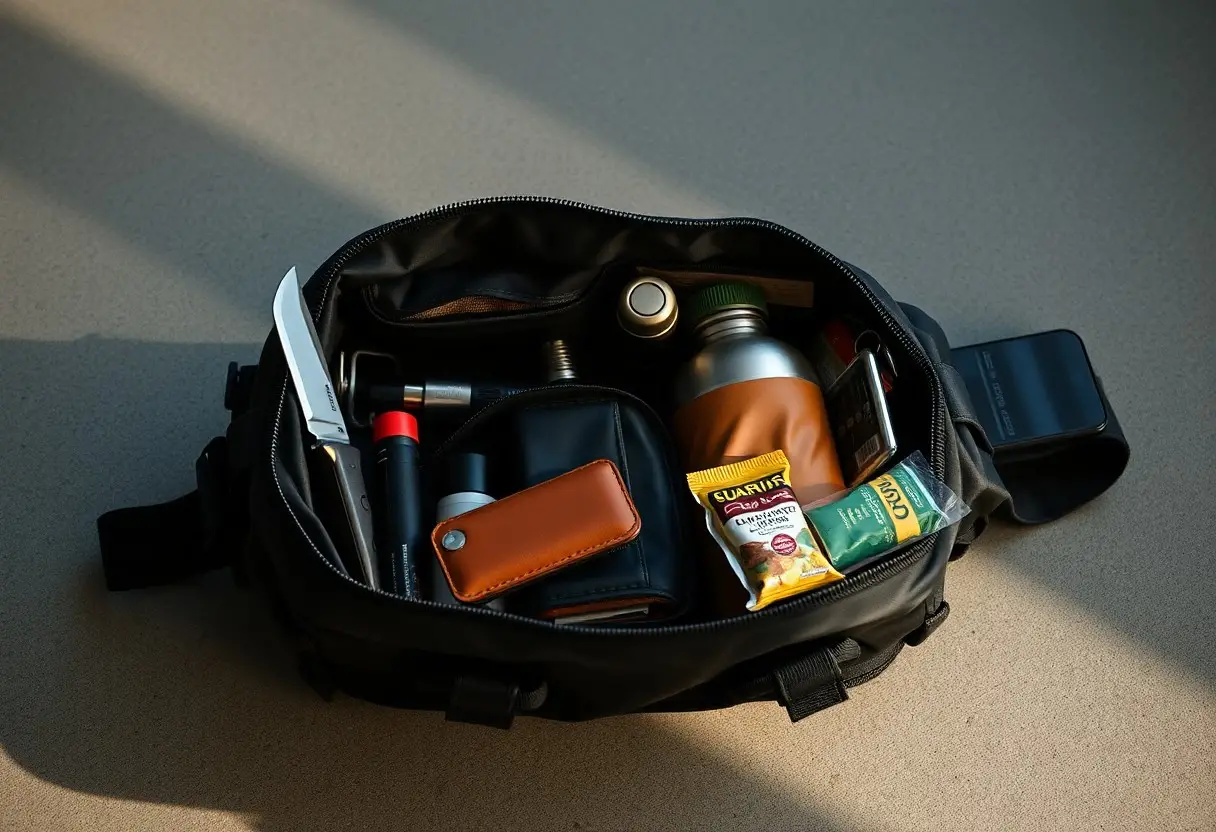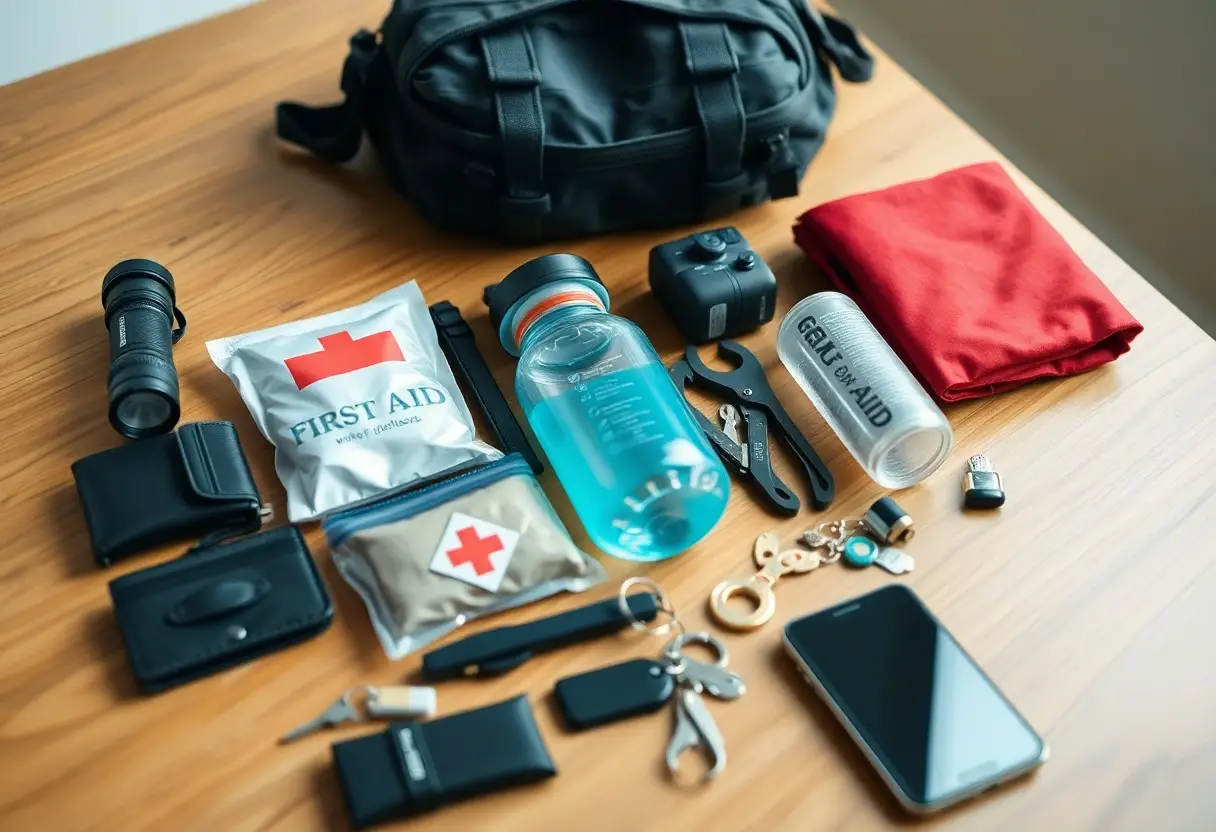Just as your daily routines adapt to the challenges of modern life, so should your preparedness gear. Transitioning from an everyday carry (EDC) setup to a comprehensive go bag involves understanding your unique needs and potential scenarios you might face. This guide will explore vital items and strategies to help you build an effective go bag, ensuring you’re ready for anything from daily challenges to unexpected emergencies. Your journey to enhanced readiness begins here.
Everyday Carry Essentials: Building the Foundation
Your everyday carry (EDC) is the backbone of effective preparedness. It should be a collection of items that you consistently have on hand, fostering both practicality and peace of mind. Start by assessing what you truly need for daily tasks and unexpected situations, focusing on quality over quantity. Essential items typically include a reliable multi-tool, a flashlight, personal identification, a first-aid kit, and a portable charger. These components form a solid base for your EDC, tailoring your setup for seamless integration into your lifestyle.
Key Items for Daily Preparedness
Selecting key items for your EDC enhances your readiness for various circumstances. A durable multi-tool can serve multiple purposes—from opening packages to making minor repairs—while a compact first-aid kit takes care of small injuries on the go. Incorporating a flashlight allows you to navigate in low-light conditions, and a portable charger ensures your devices stay functional throughout the day. Each item should reflect your daily needs and potential emergencies, equipping you to handle the unexpected effectively.
Prioritizing Needs Based on Lifestyle
Your lifestyle directly influences the selection of your EDC items. For instance, if you commute daily, a compact umbrella and a portable charger may be crucial, while outdoor enthusiasts might prioritize a durable water bottle and a fire starter. Identifying your typical activities can guide you toward what items are most beneficial. Customizing your kit based on your unique daily scenarios ensures you’re equipped for diverse situations, be it urban challenges or outdoor adventures.
Consider how your daily habits shape your preparedness needs, such as working in an office versus spending time outdoors. Office workers might prioritize tech-related items, such as a USB charger or a notebook, while those in more active environments might need weather-resistant gear or health-oriented tools like hand sanitizers. By aligning your EDC with your lifestyle, you can ensure your preparedness gear is always relevant and effectively meets your needs.
Transitioning from Everyday Carry to Go Bags: Making the Leap
Transitioning from an everyday carry to a complete go bag involves careful consideration of your needs during emergencies. You must assess potential scenarios you might face, such as natural disasters, urban unrest, or medical emergencies, to ensure you are adequately prepared. This shift requires a thorough analysis of your routine, the environment you live in, and the duration you may need to sustain yourself or your family in a crisis.
Identifying Situational Requirements
Understanding situational requirements is key to effective preparedness. Analyze your location, climate, and lifestyle to determine what conditions might necessitate the use of a go bag. Consider the types of emergencies that are most likely in your area, like earthquakes or hurricanes, and tailor your kit to include relevant supplies, such as water filtration or specific first aid items, based on these anticipated needs.
Scaling Up: From Individual Items to Comprehensive Kits
Scaling up from individual items to comprehensive kits means evaluating your basic EDC and identifying gaps. A well-rounded go bag should include food, water, shelter, and tools that enable survival for at least 72 hours. Each item should serve multiple purposes, maximizing functionality without excessive bulk. A strategic approach includes incorporating advanced gear like solar chargers, multi-tools, and emergency medical supplies, ensuring you’re prepared for a variety of situations while maintaining ease of transport.
Comprehensive kits focus on versatility and adaptability. You might consider adding items such as a portable water purifier, freeze-dried meals, and emergency blankets to support various survival scenarios. For instance, including both a tactical knife and a multi-tool ensures you can handle everything from food preparation to repairs. Each component should not only contribute to overall preparedness but also fit seamlessly into your daily routine, making it easier to transition from EDC to a full go bag that meets your specific challenges and needs.
The Anatomy of a Well-Stocked Go Bag
A well-stocked go bag provides crucial tools and supplies for a range of emergency situations, enhancing your ability to respond effectively. Key components typically include food and water, first aid supplies, clothing, shelter materials, and communication devices. Each item should serve a specific purpose and fit your personal needs and the environments you may encounter. Structuring your go bag for versatility ensures that you can adapt to various challenges quickly.
Categorizing Items for Efficiency
Organizing your go bag by categories streamlines access during emergencies. Group items into sections such as sustenance, medical supplies, tools, and personal items. This approach allows you to locate necessities swiftly, reducing time spent searching, which can be critical in high-pressure situations. Color-coded or labeled bags within your go bag can further enhance efficiency, ensuring that you can grab what you need without hesitation.
Analyzing Quality vs. Quantity
Striking the right balance between quality and quantity can make or break your preparedness strategy. Opt for fewer but higher-quality items that have proven reliability over a multitude of lesser-quality ones that could fail when needed most. Investing in durable tools and emergency gear ensures that your go bag withstands the tests of time, while overly bulky collections of cheaper substitutes may lead to unnecessary weight and diminished efficiency.
In assessing your go bag, prioritize items that offer robust functionality and longevity. For instance, a multi-tool can replace several tools, minimizing weight while maximizing capability. Quality food rations may have longer shelf lives and better nutrition than cheaper snacks. Case studies show that individuals with well-crafted, quality gear report higher satisfaction and better outcomes in emergencies. Thus, focusing on durability, reliability, and versatility in fewer, well-chosen items lends confidence to your preparedness plan while maintaining a manageable weight for your go bag.
Real-Life Scenarios: When Your Go Bag Becomes Essential
Whether faced with urban unrest, natural disasters, or unexpected journeys, the right go bag can be a lifesaver. In moments of chaos or uncertainty, having a well-prepared kit at your side ensures that you can navigate the challenges ahead with confidence. From quick escapes to sustainable survival, understanding various scenarios helps you tailor your go bag effectively.
Urban Settings: Navigating City Challenges
In urban environments, emergencies can strike suddenly, whether through civil unrest or natural crises like earthquakes. Your go bag should include necessarys such as water purification tablets, a compact first aid kit, and versatile tools, allowing you to adapt to rapidly changing situations. Consider including a portable phone charger and cash in small denominations to facilitate communication and transactions when access to services is compromised.
Wilderness Survival: Preparing for the Unexpected
Wilderness situations demand preparation for various challenges, including unexpected weather changes and injuries. A capable go bag should contain items like a multi-tool, fire-starting gear, and navigation aids like a map and compass. Specific food supplies, such as energy bars or dehydrated meals, can maintain your energy levels during extended outings.
Unexpectedly finding yourself in the wilderness highlights the necessity of thorough preparation. A solid go bag should carry items suited for multiple days, including a durable tarp for shelter, high-calorie snacks for energy, and a reliable water filtration system. Essential gear also may include a first aid manual and signaling devices like whistles or mirrors, which can significantly increase your chances of rescue. Incorporating these items ensures you’re ready for various wilderness scenarios, from getting lost on a hike to encountering severe weather conditions.
The Psychology of Preparedness: Beyond the Gear
A proactive mindset is key to effective preparedness. This involves not only having the right gear but also cultivating the mental fortitude to navigate unpredictable situations. Understanding your own psychological triggers, fears, and reactions can empower you to respond with clarity and confidence, transforming anxiety into action. Preparedness isn’t just about survival; it’s a lifestyle choice that fosters resilience, adaptability, and a sense of security.
Mindset Shifts for Readiness
Embracing a preparedness mindset requires a shift from passive concern to active engagement. Visualizing potential scenarios helps you mentally rehearse responses, diminishing fear and increasing self-efficacy. By reframing challenges as opportunities for growth and understanding your capacity to handle adversity, you build resilience that can sustain you through emergencies.
Community Engagement and Support Systems
Connecting with your community enhances personal preparedness and collective strength. By sharing resources, knowledge, and experiences, you build a network of support that amplifies individual readiness. Engaging in local training sessions, workshops, or emergency drills facilitates collaboration, creating a culture of preparedness that benefits everyone involved.
Participating in community preparedness not only reinforces your own readiness but also fosters vital relationships that can be lifesaving in emergencies. Initiatives like neighborhood watch programs or local disaster response teams create a shared sense of responsibility. Studies show that communities with strong support systems are more likely to recover swiftly from crises. By investing time in your local network, you gain access to diverse skills, resources, and emotional support, transforming isolation into solidarity during difficult times.
Final Words
With this in mind, understanding the transition from everyday carry items to fully equipped go bags empowers you to enhance your preparedness for various situations. By thoughtfully selecting and organizing your gear, you ensure that you have the crucial tools and resources ready at a moment’s notice. Consider your unique needs and environment, and tailor your kit accordingly to optimize efficiency and effectiveness. This proactive approach not only boosts your confidence but also improves your ability to respond resiliently when faced with unexpected challenges.



